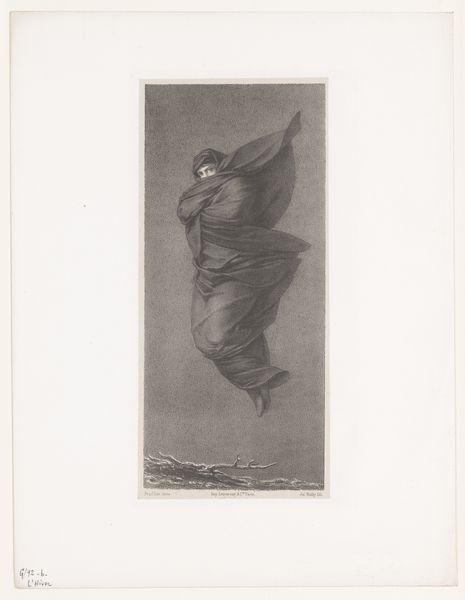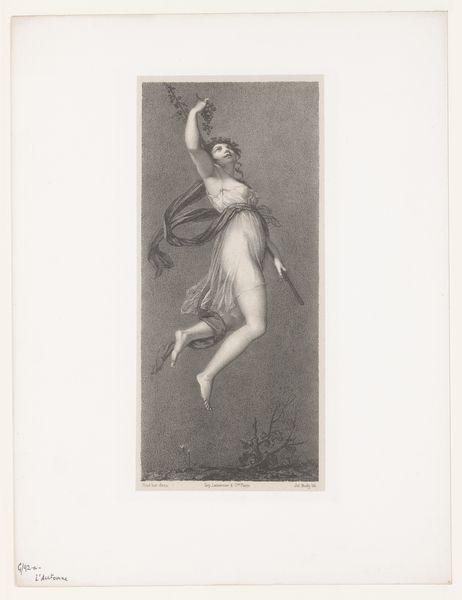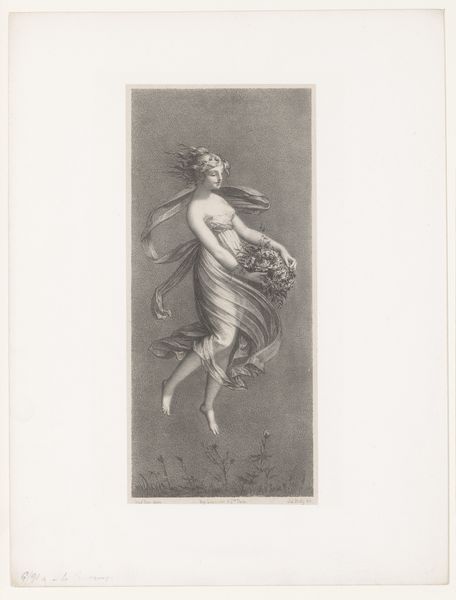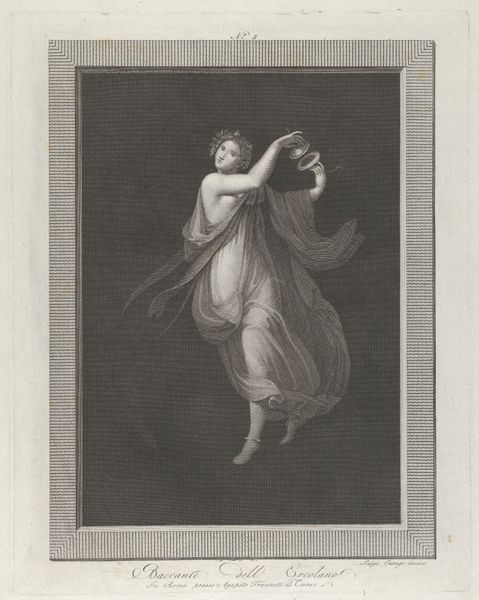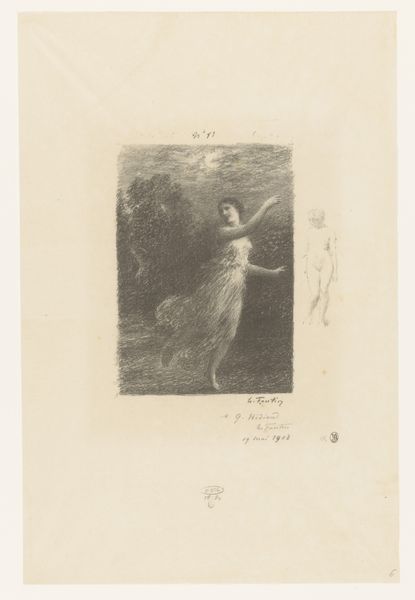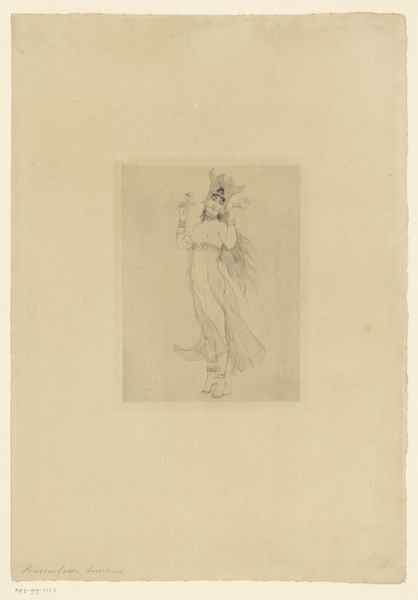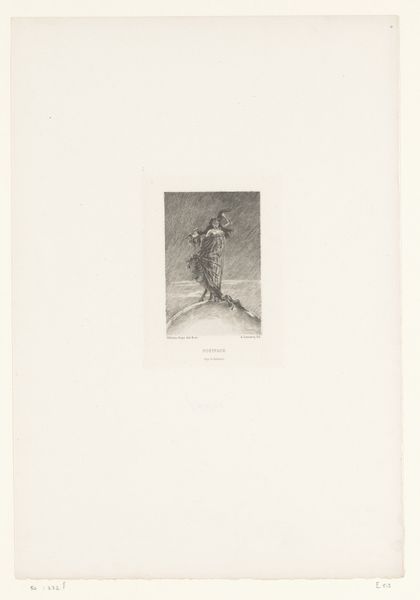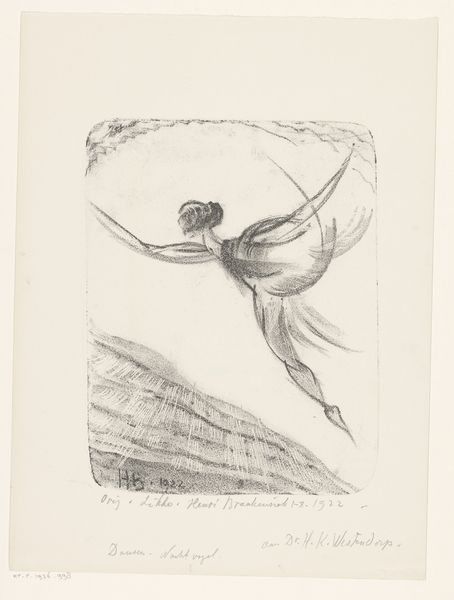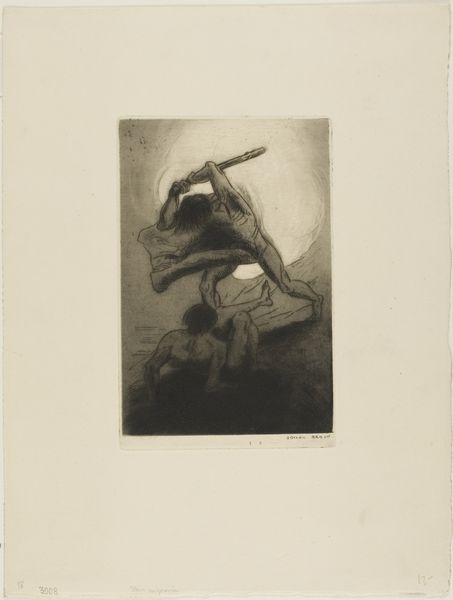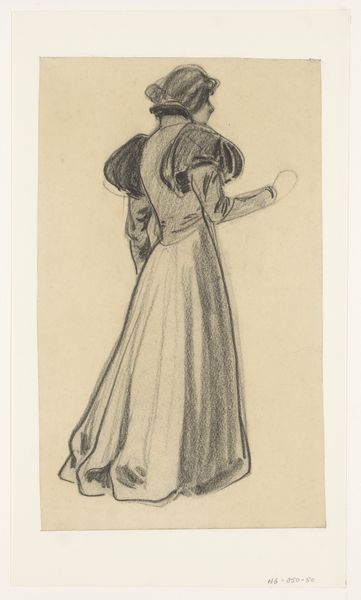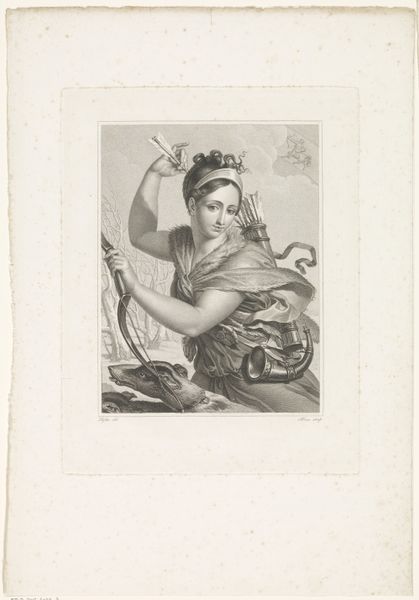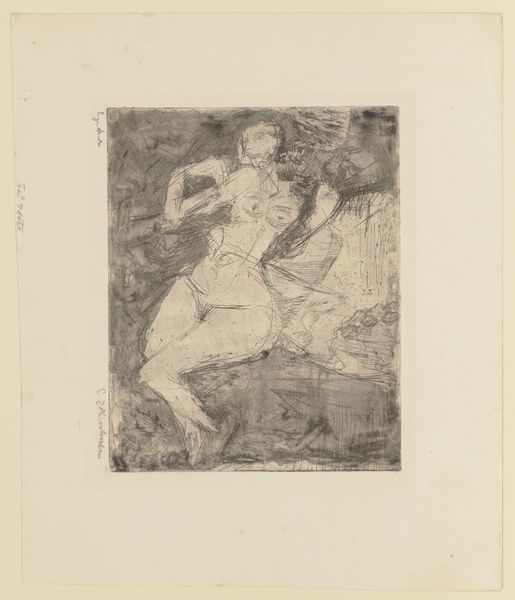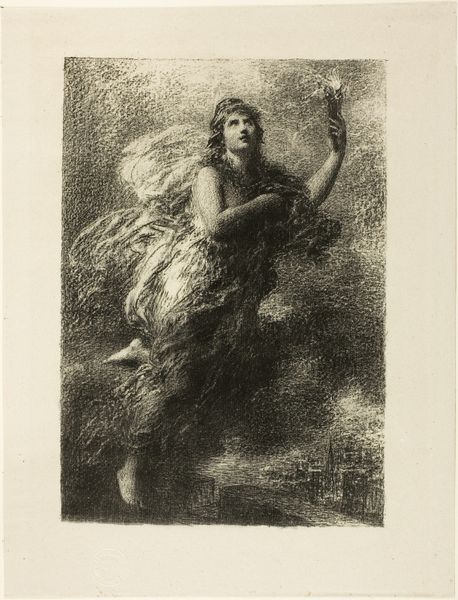
drawing, pencil, engraving
#
pencil drawn
#
drawing
#
pencil sketch
#
figuration
#
pencil drawing
#
romanticism
#
pencil
#
line
#
nude
#
engraving
Dimensions: height 360 mm, width 274 mm
Copyright: Rijks Museum: Open Domain
Julien-Léopold Boilly created this print, "Zomer," using lithography, a process that democratized image-making in the 19th century. Unlike traditional etching, lithography relies on the chemical repulsion between grease and water. The artist likely drew directly onto a prepared limestone surface with a greasy crayon, then treated the stone with acid. This fixed the image, allowing for multiple impressions to be made. The velvety blacks and delicate grays are characteristic of the medium, offering a tonal range that mimics drawing. This printmaking technique allowed for relatively quick reproduction and distribution, which allowed artists to reach a wider audience beyond the elite. With lithography, images became more accessible, playing a crucial role in the burgeoning print culture of the time. It blurred the lines between original artwork and reproduction. Considering the materials and techniques used, and how they connect to broader social and economic shifts, allows us to appreciate its full meaning.
Comments
No comments
Be the first to comment and join the conversation on the ultimate creative platform.
